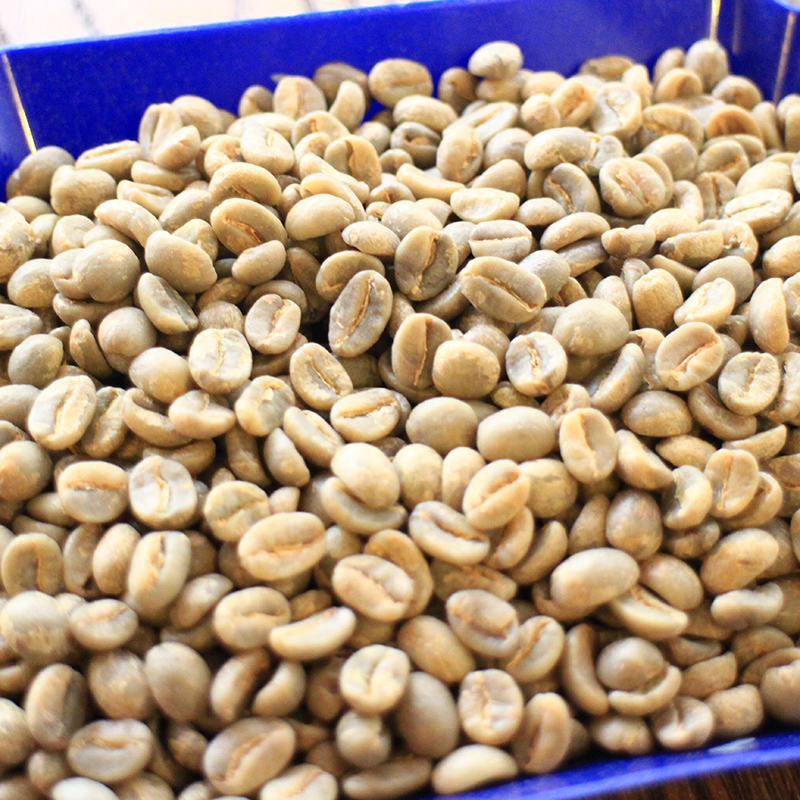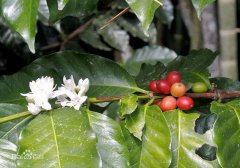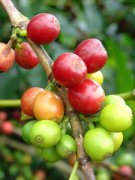The most popular and best-controlled way of roasting coffee is semi-hot air baking Italian blend of coffee beans.
Semi-hot air baking
This is currently the most popular and best-controlled way of roasting coffee. It can make up for the shortcomings of the direct-fire roaster, improve safety, and show the aroma and flavor of coffee.
Many people say, "with the change of season or weather, the results of baking will vary a little." This sentence does not seem to be suitable for semi-hot air baking. Because the semi-hot air roaster is not as easily affected by the external environment as direct fire. So the use of good quality raw beans, coupled with the same benchmark operation, the baked beans flavor and aroma will be exactly the same, in the quality control will not cause too much problem.
Advantages:
The temperature inside the boiler is easy to adjust: the firepower of the semi-hot air roaster is relatively stable, so it is not affected by the external environment. As long as you adjust the heat, you can easily control the firepower needed for each baking stage. However, after the explosion of the beans, the treatment method of the roaster is different from that of the direct fire roaster. After the explosion, the firepower should be concentrated on the inside of the boiler, and even if the firepower is reduced, the temperature should not be allowed to drop, so as to prepare for the sufficient energy needed for the expansion of raw beans. Therefore, it is necessary to pay attention to whether the temperature in the furnace drops after the explosion. If the firepower is not enough, it is necessary to add 1 ~ 2 grids of firepower.
Stable supply of firepower to help raw beans expand evenly: the characteristic of semi-hot air type is that the internal and external tissues of raw beans can be heated evenly and the firepower is stable. Thus, the flavor and aroma of coffee beans are relatively stable. Compared with the beans baked by the direct-fired baking machine, the beans blown out by semi-hot air are lighter in color at the same baking degree.
Suitable for roasting of blended coffee: if beans of different densities are mixed, the semi-hot air machine is more stable because the heat energy conveyed is more uniform. The heat provided by the semi-hot air reaches the central part of the bean, so even if the density of the raw bean is different, the heat source provided by the baking machine can be completely absorbed by the raw bean.
Single mixed beans: (Blending After Roasting) baked individually and then blended
Mixed beans: (Blending Before Roasting) mix the beans before baking.
Disadvantages:
Sufficient preheating time is needed: compared with direct fire, a semi-hot air bean dryer takes at least 30 minutes to preheat. In case of insufficient preheating and baking, the tissue of the beans cannot expand evenly, resulting in inconsistent color of the coffee beans, not to mention the stability of the flavor and aroma of the coffee beans.
The initial firepower setting is important: in the first endothermic reaction, the firepower is too strong compared to the amount of raw beans, resulting in the first burst earlier. If the endothermic reaction has already begun, it will be difficult to adjust the firepower. As a result, the first explosion and the second explosion point are too close to distinguish. Most of the baked beans are mixed with grass flavor and raw bean flavor, which is due to the fact that the beans are not cooked at all.

Important Notice :
前街咖啡 FrontStreet Coffee has moved to new addredd:
FrontStreet Coffee Address: 315,Donghua East Road,GuangZhou
Tel:020 38364473
- Prev

Direct fire roast Hot air or semi-hot air roast Single or single bean coffee Boutique coffee
The boiler surface of the direct fire baking machine has a perforated design. The holes have a certain size and spacing. The fire below will be directly transmitted to the furnace cabin. It requires a high level of skill on the part of the baker, and very careful adjustment of profit at each stage. Advantages: Short preheating time: Compared with hot air and semi-hot air baking machines, the furnace wall of the direct fire baking machine is thinner, so the boiler as a whole
- Next

Brazilian coffee beans processing Brazilian coffee green beans wholesale coffee beans American coffee beans
The four most common treatments for Brazilian coffee are sun, desizing, half-washing and washing, with sun being the most popular. Since the harvest seasons of Cerrado Mineiro and Mogiana Paulista, Brazil's two main producing areas, are both dry seasons of the year, natural solarization is common in this area.
Related
- Beginners will see the "Coffee pull flower" guide!
- What is the difference between ice blog purified milk and ordinary milk coffee?
- Why is the Philippines the largest producer of crops in Liberia?
- For coffee extraction, should the fine powder be retained?
- How does extracted espresso fill pressed powder? How much strength does it take to press the powder?
- How to make jasmine cold extract coffee? Is the jasmine + latte good?
- Will this little toy really make the coffee taste better? How does Lily Drip affect coffee extraction?
- Will the action of slapping the filter cup also affect coffee extraction?
- What's the difference between powder-to-water ratio and powder-to-liquid ratio?
- What is the Ethiopian local species? What does it have to do with Heirloom native species?

